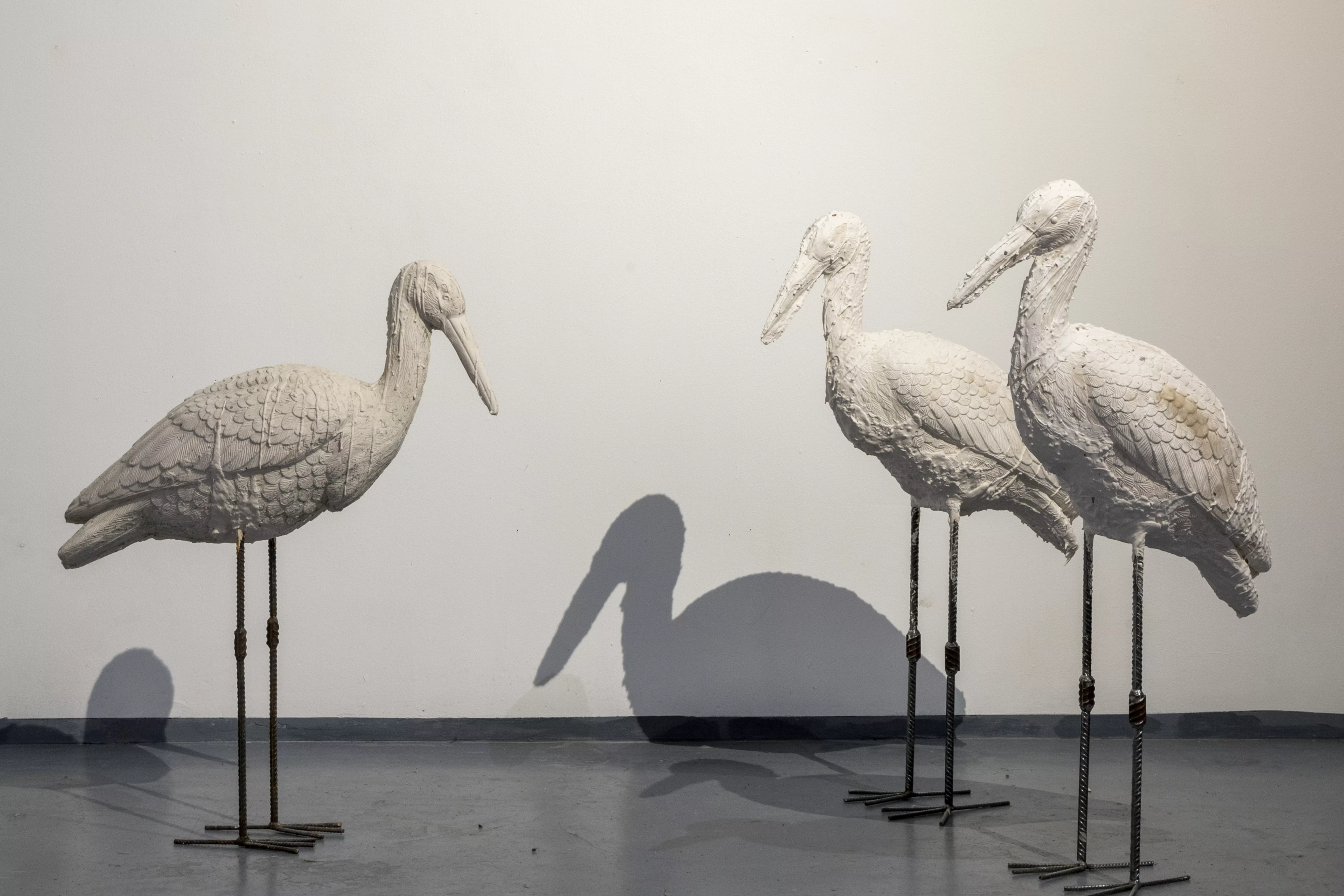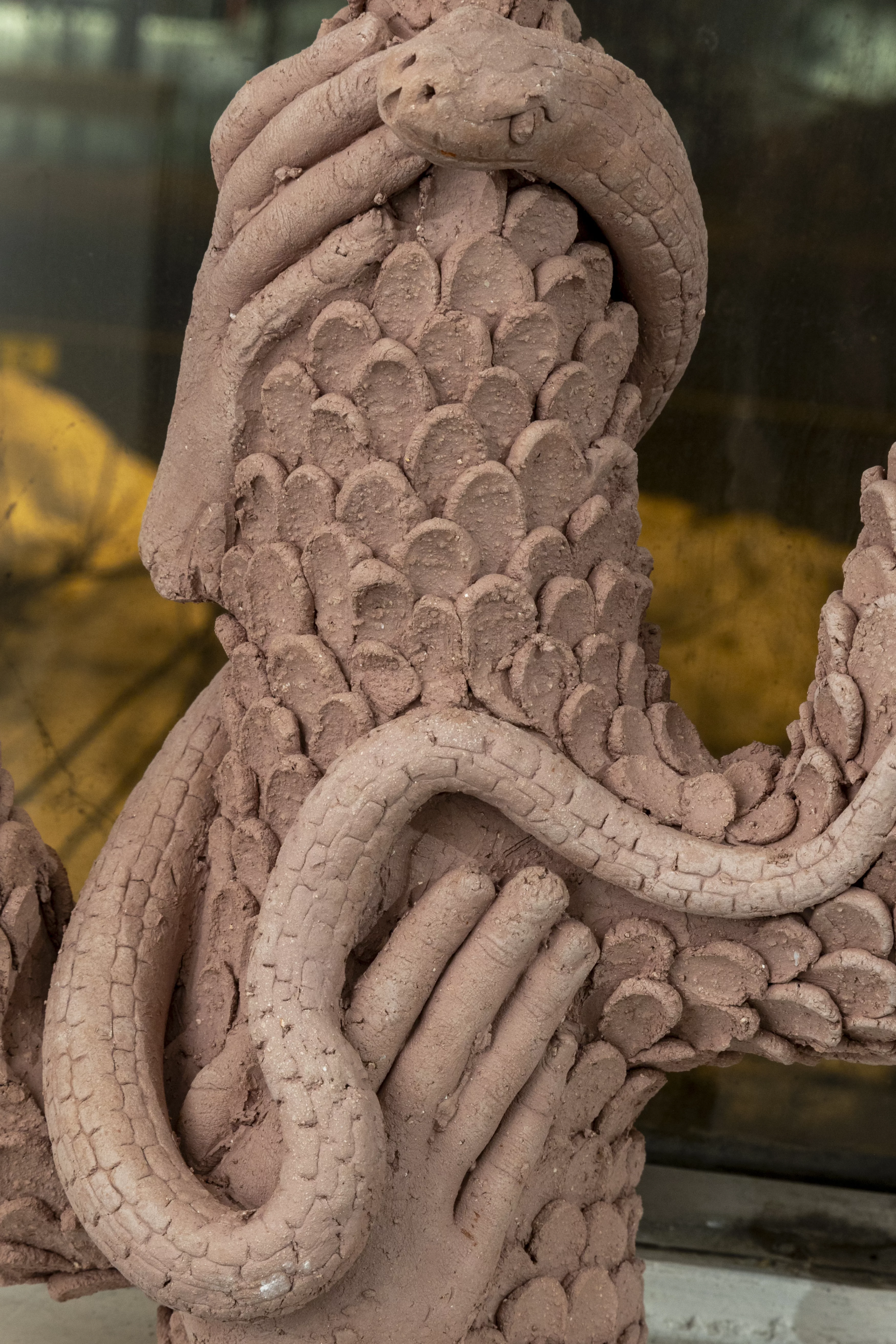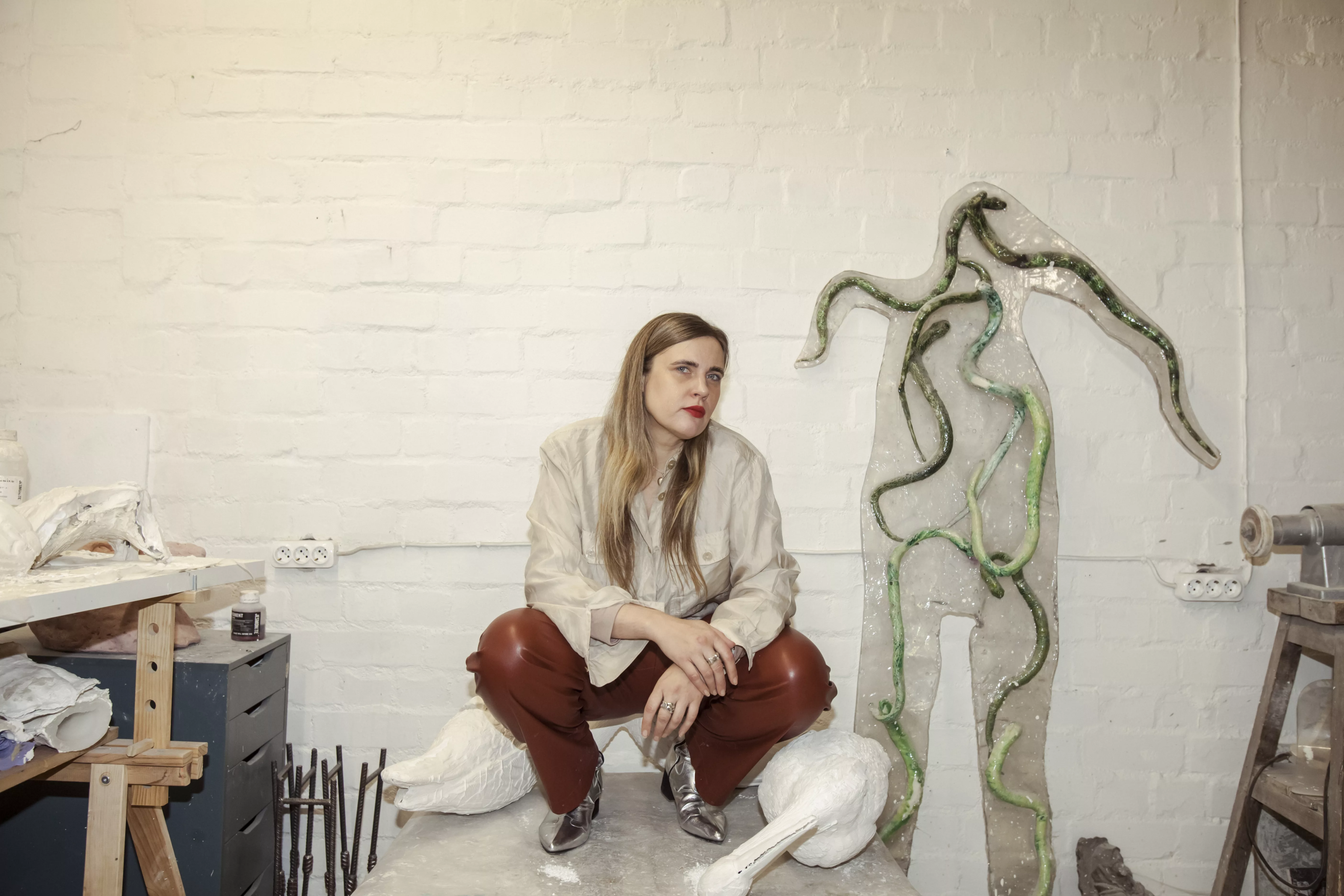
Ahead of her presentation for the Estonian Pavilion at the 60th Venice Biennale, Edith Karlson welcomed Elephant contributor Millen Brown-Ewens to her studio.
Edith Karlson is an evolutionist, albeit not in an entirely scientific sense. Representing a new wave of Estonian sculptors who emerged in a post-Soviet state, Karlson redefines the very essence of world-building, sculpting forms and narratives that bridge past and present and conjure the legacies of humankind in surreal imaginaries.
Karlson graduated from the sculpture department of the Estonian Academy of Arts, a building constructed in 1976 for the purpose of creating imposing Soviet monuments, which now serves as her studio. For the past 16 years, she has been part of this artist-managed space where legendary sculptors still actively pursue their craft, the tradition being that once you secure a studio, you have it for life. When we meet at the entrance to the stark modernist block, nestled in the forested Nōmme district of Tallinn, I’m somewhat surprised at Karlson’s composure. At the time of my visit, in early March, she is just six weeks away from representing Estonia at the 60th Venice Biennale with a large-scale installation consisting of over 300 individual sculptures entitled Hora Lupi.

Her studio is a lively spectacle, given over to a carnival of partially constructed creatures and ikebana vases cast in concrete and terracotta, as well as a living one in canine form that Karlson calls Iti. I plop myself down next to the coiled pooch and wonder what she makes of all this, particularly her predecessor (a Chihuahua named Kusti) memorialised in his bed beside my feet. She too looks relatively unperturbed.
Anticipating realisation, Karlson’s artworks are an indication of a wider preoccupation with metamorphosis embedded within the very act of creation. “It often feels as though my existence is held within a constant state of confusion,” Karlson tells me. “My art is the process of making sense of this assorted jumble, finding the spine to it. The upcoming exhibition in Venice consists of so many elements that I haven’t been able to play through it all at once, which means the final truth will be revealed on the spot. I really want to see whether it will work as I have felt in my soul.”
Karlson has acquired a proper sculptor’s skill set and she certainly hasn’t neglected it. In the studio, she moves a butter knife through the air, fondly recalling her tutor Jaak Soans who taught her how to mould facial contours with the tool, tracing form as an ant follows its own path. As I look around, it’s clear that she moves effortlessly between materials – concrete, plastic, terracotta, jasmonite – not adverse to experimentation.

Hora Lupi will be realised at the church of Chiesa di Santa Maria delle Penitenti, perched in the quiet district of Cannaregio, overlooking the canal. The venerable interior of the 18th-century church serves as an evocative backdrop for Karlson’s sculptures. Where waves from passing vaporetti gently crash through a gaping hole in the collapsed floor, weremermaids perch on the verge of its opening, calling to mind the shapeshifting Näkk (water spirits) of Estonian folklore. Elsewhere a wooden relief depicting dancing sea creatures and a parent and child is mounted on a crumbling altar. “The concept is so completely mixed up with the building itself that it doesn’t exist in the same capacity when removed,” reflects Karlson. “It’s architectural layers are an endless playground and have been my point of departure.”
The exhibition title – translated as ‘the hour of the wolf’ – refers to a mythical space and time before dawn in which the inarticulable oddities of existence disappear as quickly as they arrive. In Swedish folklore, this hour of deep darkness is when the most births and deaths occur. “I feel that this time holds the feeling of falling,” says Karlson. “When you’re at the precipice of discovery and can’t turn back. The sculptures embody a mixture of fear, excitement, unknown and inevitability, sort of like the moment we’re living in now.”
Frequently engaging with animal forms and anthropomorphic figures, Karlson positions humans as creatures with primal impulses and desires, superfluously concealed beneath masks of morality. With Hora Lupi, she suggests that the sincerity and bluntness of these instincts can sometimes take brutal form, at times abject but also gentle and melancholy. In one room, three sculpted women stand weeping as though mourning a world that once was. In another, storks teeter on platforms, a symbol of quiet hope amidst chaos. The monumental centrepiece of Hora Lupi is installed in the Church’s empty nave. A trio of towering hominids, over five metres tall, confront one another with cudgels, leaving us to decide whether they’re fighting one another or the snake that slithers between their feet.

Where the veneer of civilisation slips, we find no romanticist fantasies. Instead Karlson indulges in the ironic failures of life, nonsensically collected together, exposing fissures that trace the fragile, flawed absurdity of humankind, through which eventually, perhaps, a redeeming light will shine. Dealing with the experience of this fragmented self, Karlson’s sculptures are established from a babel of rich cultural and historical sources, ground to a coarse mixture and reborn in satirical repositories of existential unease.
Central to the exhibition is a vast collection of hand-crafted self-portraits made by a motley set of individuals from Estonian-excavated clay – over 200 friends and strangers whom Karlson has been welcoming to her studio since 2020. Among her guests are children and the elderly, state officials, actors, and common workers, many of whom had never laid hands on clay, representing a non-hierarchal cross-section of society. Inspired by the 14th-century terracotta sculptures adorning St. John’s Church in Tartu, Estonia, which most likely depict townspeople of the time, these portraits afford a profound sincerity, capturing the true essence of each individual. When they take their place around the cornices of the Venetian Church, they will form a striking gallery of contemporary icons sanctified as enduring memorials to their creators with front-row seats to Karlson’s strange new order of things.

If we were determined to find a singular thread to it all, then perhaps post-anthropocentrism would do. However, when meeting Karlson, I’m not sure this captures the depth of her vision or her faculty for humour. “Let’s be honest, for nature, it’s mostly better that there were never any humans around to begin with,” she quips. “In Estonia we have a saying: ‘Inimene on looduse kroon’ which means ‘Man is the crown of Nature’. It has always depressed me.” The artist’s mistrust of people and longing for authenticity calls to mind writer Olga Tokarczuk or director Ali Abbasi’s representation of the crossing of boundaries as a necessary form of life. In Drive Your Plow Over the Bones of the Dead, Tokarczuk puts forward questions that feel familiar to Hora Lupi. What does it mean to be human, and what is it to be an animal? Are the two all that distinguishable? Who shall survive it all?
“I used to be very ironic and bitter about humans, but I suppose that whilst we’re here, we might as well find some peace,” Karlson continues. “Hope is necessary to survive.” In the absence of truth, Hora Lupi finds anarchic humility. It represents a mythical primordial moment in sculpture in which the inequalities of existence are balanced out, banded together on sacred ground, to be put before a higher power to whom we all must answer in the end.
Written by Millen Brown-Evans





